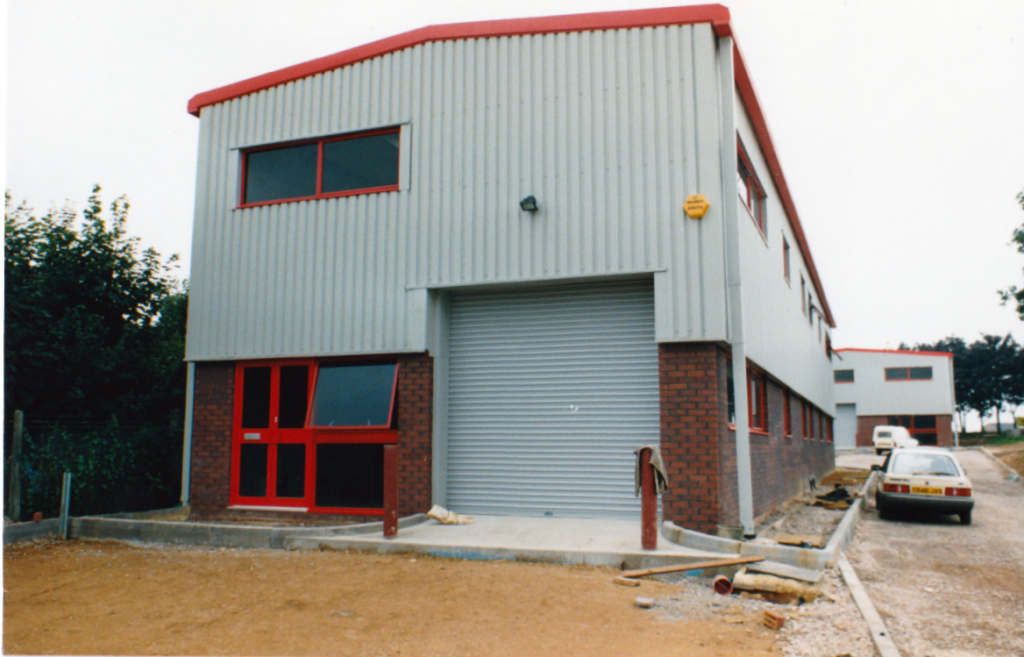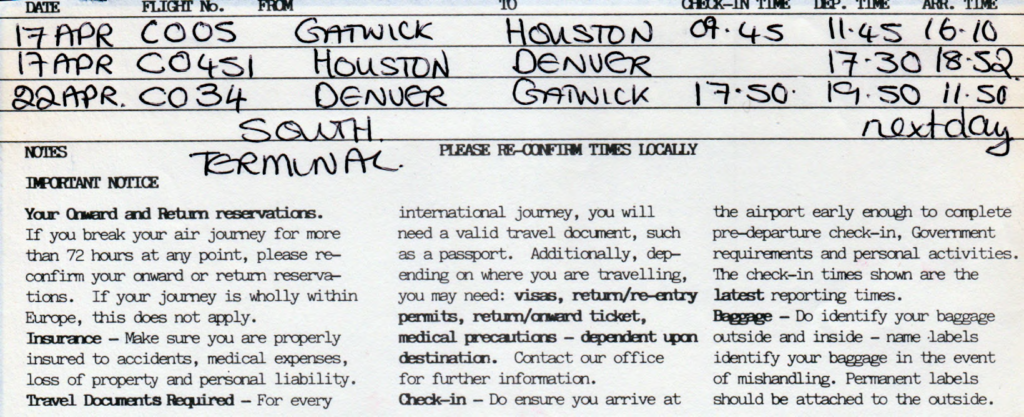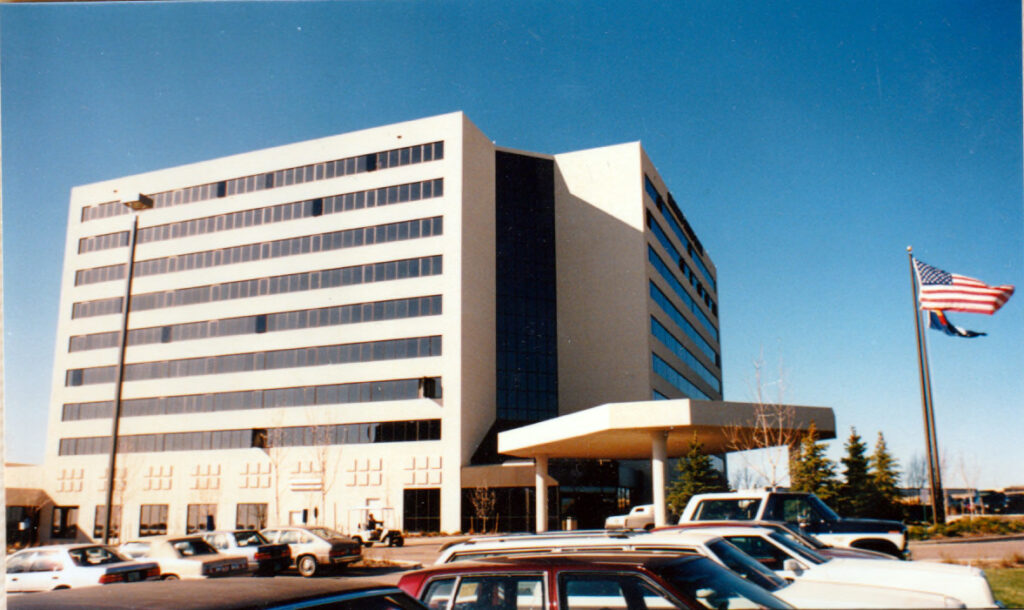Following the lack of success with the 68186 the directors, Jin Mockler and Bob Dunlop wound up Chase Systems. They had learned some useful lessons in using the 80186 to manage input and output. Accepting that the future of small scale Unix systems lay with the industry standard PC architecture they recognised that the limited I/O on common PC platforms was holding back adoption.
Putting the previous development work to use they created the concept of an intelligent multi-channel I/O board for the ISA bus providing 8 RS232 ports to connect Unix systems to terminals and printers.
I had moved on to another employer by this time but was contacted by Jim and Bob who asked me to come back to work on the software for their new development. Since they were offering considerably more money and the possibility of a company car I accepted the offer, I think I was the 4th employee after Jim, Bob and a secretary.
I worked on all the aspects of the software, including the firmware on the board itself, the Unix device drivers, installation scripts and also became involved in creating manuals and some of the promotional material.
All of the software development was done in the Unix system, written largely in ‘C’ and cross-compiled to the 80186 for the firmware which was then burnt into EPROMs.
My largest contribution to the firmware was the multi-board handling. The original contract hardware designer had put in a complex 3- wire system that interconnected I/O pins and interrupt lines between two adjacent boards but the routing had been done incorrectly and the system didn’t actually work. I recognised that each board could at least send out one interrupt on an I/O line and receive one interrupt in the PIC. I designed a revised system that was self configuring by counting incoming interrupts and passing them on. Once each board had figured out its position in a chain of up to 4 boards they would share a single I/O address and interrupt on the ISA bus and pass a “token” around to ensure that each had a fair access to the DMA controller.
Locations
Chase Research I believe started out in the same premises as the other Chase companies, in an old industrial unit of St Johns Road near Mortlake railway station. The car park and loading dock were accessed via a narrow alleyway that went under the first floor of the building and emerged at the back. I was told of an occasion when some heavy machinery was delivered, after which the delivery truck rode up on its springs and couldn’t get out again! Apparently the entire staff were herded into the truck to weigh it down sufficiently to leave…
The Mortlake premises were already quite full and it was clear that Chase Research would need its own premises. A brand new industrial unit was rented in Isleworth, just a short distance from Isleworth railway station. The unit was bare inside with a small office space on a mezzanine floor above the entrance. (The building is now used by a Funeral Directors specialising in “Worldwide Human Remains Shipments”.)

I joined the company at around this time, working from home briefly before helping with the fit out of the new premises. I do recall moving all the existing completed and near completed stock of the products in the boot (trunk) of my Ford Escort. During the drive across South London I calculated that the retail value of the load was some 100 times the value of my car, and sincerely hoped that no-one rear-ended me on the journey.

It didn’t take too long for those premises to become over-crowded. The original plan was for the development work to be done on the first floor, with the production carried out by highly skilled and dexterous ladies on the ground floor which they shared with shelving racks of components.
Distribution Channels
Chase Research did not sell directly but through distributors. This process was an eye-opener to me, especially in the product pricing. What surprised me was that the actual cost of building the physical product bore very little, if any, relationship to the actual selling price. The company would suggest a recommeded “retail” price, largely based on the prices of similar products rounded up to end in 99!). Negotiations would then take place with the distributor based on how many they expected for committed to buy, which was some large percentage discount off the “retail” price.
In the meantime, the job of the production manager (by this time a South African guy called Rodney) and our buyer was to purchase components and get them assembled as cheaply as possible. Hopefully the gap between the production cost and the selling price was enough to pay for everything (including our salaries) and make some profit!
Our first distributors were an outfit called Specialix, although there was some sort of falling out (details above my pay grade) which involved them introducing their own competing product and not paying their outstanding invoices. Presumably this was eventually resolved and our main UK distributors became A company called something like “Level 5 Software” (who also sold hardware and may have been called Level 4 instead?)
By this time I had a company car, on condition that it had to be an estate (station wagon in US parlance). As it happened I lived in Basingstoke, where Level whatever had their distribution warehouse so one of my roles was delivery driver, filling the back of the car with Chase Research branded cardboard boxes and dropping them off on the way home. Things were surprisingly informal, I would drive up to the unloading dock, slide out the boxes, wave vaguely at one of the warehouse staff and head home.
This worked fine until the week Rodney the production manager got a call asking when that week’s delivery would be there as they had orders to fill? “I did it Monday!” I protested when challenged, but dutifully drove down to Basingstoke to look for them. Eventually we found them neatly stacked, exactly where I left them but hidden behind an entire truckload of Epson printers stacked more than head high. My first task the next day was to write a script to let Rodney generate a delivery note that I was instructed to get signed!
Technical Pre-Sales
Level x were only the UK distributor to the industry. Being the technical guy I was often dumped into the pre-sales technical support role to work with Jim initially but later a dedicated sales guy, Alan. Some visits were decidely local, to Putney I recall, where Olivetti bought and rebranded our kit on an OEM basis; but I also remember visiting Nixdorf in Paderborn (?) Germany and, Nortel (?) in Oslo and going to Stockholm for similar reasons.

The longest trip however was made on my own when I was loaned for a whole week to our US distributors for them to do with me as they wished, which turned out to a 10-flight trip around the continental US reminiscent of a Springsteen concert tour. The outfit was based near Denver so I flew in to the old Stapleton airport on a Sunday, where my host had very Kindly offered to pick me up and drive me to the hotel, the Embassy suites near Boulder. His wife came along for the ride but Rollie let me ride shotgun to see the sights.
Being a Sunday the freeways were very quiet, albeit with a few regular, quite heavy rain showers. At one point on a new empty three lane highway a red Pontiac Transam baralled past us, hit a stretch of standing water and started aqua-planing, rotating rather balletically right in front of us. I was a bit zonked from the flight so this all seemed to me to just another movie framed by the windscreen so I didn’t register any concerns despite Rollie’s frantic efforts to brake, steer away from the trans-an and not lock up his own wheels. As we slowed so did the Transam until both vehicles came to a halt just a few feet apart. The Transam straightened up and took off again, a little sheepishly I felt. My hosts showed almost British levels of aplomb, Rollie’s wife just sighing “oh my” from the back seats and Rollie himself just commenting “those wide tyres just don’t hold the road in the net”. And on we went to the hotel, a brand-new Edifice to the South of the city centre.

